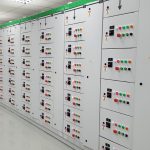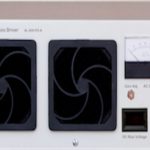Magnetic starters are often used in an electrical circuit where the intention is to switch on a circuit in a motor, either power or control, remotely.
The contractor for the motor starter activates when a current is passed through an electromagnet on the contactor. When current flows, an electro-magnetic field is produced, drawing the moving contact to the fixed contact, completing a circuit. When the coil in the contactor is no longer charged, gravity moves the core of the electro-magnet back to its open position.
Magnetic starters for AC motor use:
Alternating current motor starters are installed on motors that have a simple switching mechanism. There can be safety switches installed in the circuit that can limit the power to the starter. Motor starters are employed on very large motors where the power demand is so high, that starting and stopping them manually would be dangerous for the operator. The motor starter does not have to be anywhere near the motor that it is controlling; it can be installed remotely, usually in a panel containing other electrical equipment. This allows the motor to be started and stopped remotely or automatically. Combination magnetic starters have three basic elements to make them function; the pull-in coil, contacts and protection from over current.
Function of the pull-in coil:
All motor starters have a coil which is made up of many strands of copper wire, which are all insulated from one another by a thin veneer of varnish. The varnish stops the strands from coming into contact with one another and shorting out. The strands of copper wire are wound around an insulated form, usually plastic, that allows a metal device called a plunger to be moved either “in” or “out” depending on whether electricity is applied to the coil or not. When the coil is energized, the plunger is engaged, conversely, when power to the coil is suspended, the plunger disengages. When the plunger is engaged, the pair of contacts in the starter touch one another, completing the circuit.
The contacts:
The contacts are operated by a lever mechanism according to the location of the plunger. The contacts are connected on one side to the power feed and the other side to the motor circuit. There are often multiple contacts in larger combination magnetic starters and the mechanics are such that all contacts open and close in the same instant, thus insuring that no damage can be occurred by either the motor or the starter.
Over-current protection:
The over-current device monitors the power that the motor uses while operating. The over-current device is normally a bi-metal strip that bends when over-heated, disrupting the flow of current to the coil, shutting down the motor.








